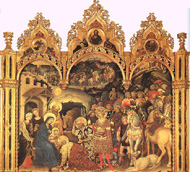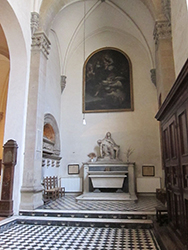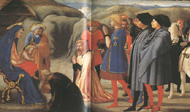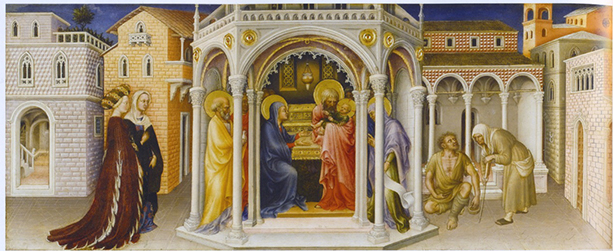|
The Strozzi Chapel Excerpt from John T. Paoletti and Gary M. Radke, Art in Renaissance Italy, p. 198: At the beginning of the fifteenth century Onofrio Strozzi was head of the wealthiest family in Florence. When he died in 1418 he had already initiated work on his family burial chapel at Santa Trinita --which was also to serve as the church's sacristy. The chapel and much of its decoration were commissioned by Onofrio's son, Palla Strozzi. Documentary evidence indicates that Ghiberti was the architect --a choice that may reflect the fact that Palla Strozzi served as a member of the committee that ordered Ghiberti's north doors of the Baptistry. The construction of the Strozzi Chapel can be compared with the building of the Old Sacristy at San Lorenzo by Giovanni and Cosimo de'Medici. The Strozzi and Medici were members of opposing political factions in the city. When control of the government passed to the Medici faction in 1434, Palla Strozzi was exiled --thus incidentally depriving the city of a potentially outstanding artistic patron. Although the Strozzi were considerably wealthier than the Medici when both began their building projects around 1418, the Old Sacristy was considerably larger and more insistently classicizing than the Strozzi commission. This gave the Medici an architectural prominence in the city far surpassing the Strozzi -- not only in their own time but until recently. The effect has been to distort understanding of the fifteenth century. |
Limbourg Brothers, Adoration of the Magi and Journey of the Magi from the Très riches heures of Jean de Berry, c. 1415.






